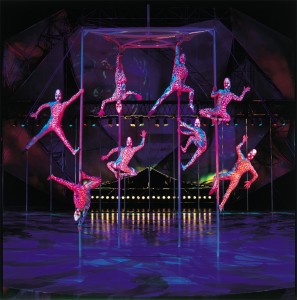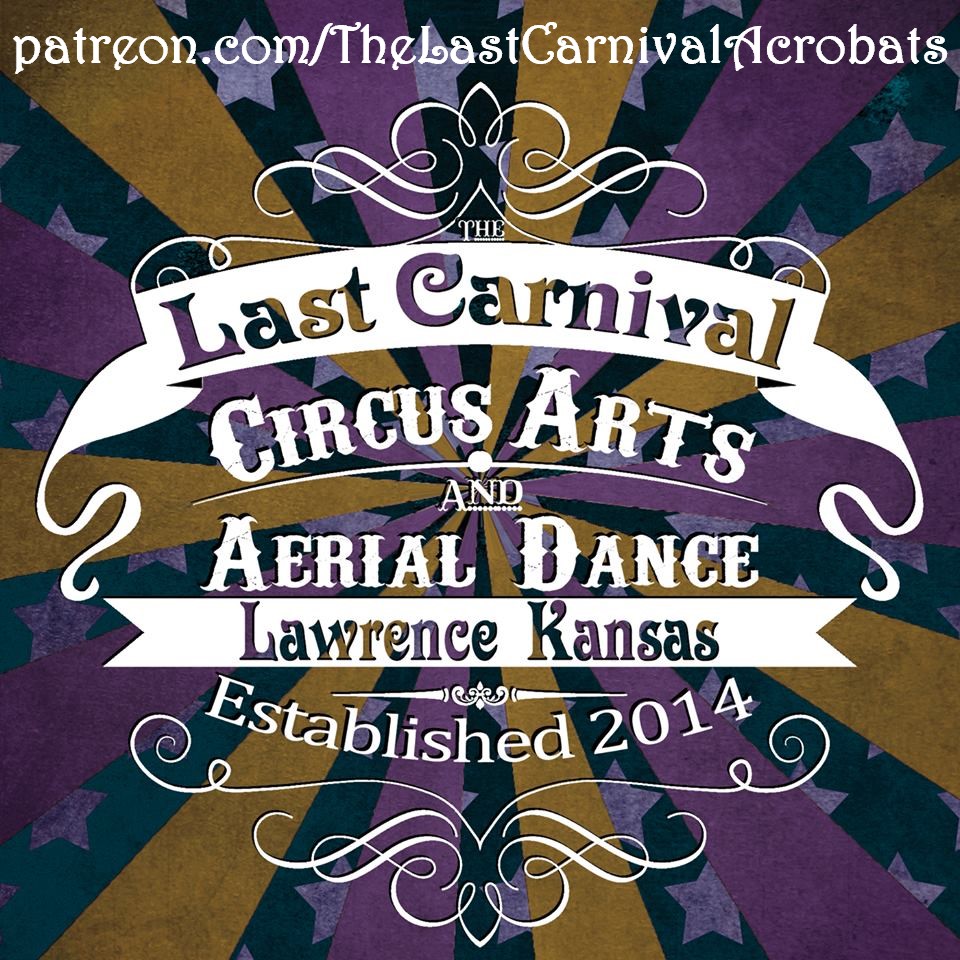Pole Fitness at The Last Carnival
Flying Pole and Whirl Pole 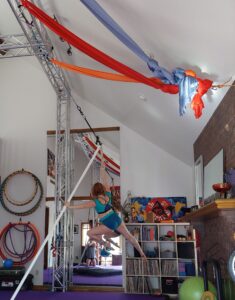
Our Flying and Whirl Poles give a bit more of a circus spin to pole. With Flying Pole the pole is hung from our aerial rig instead of being tension rigged to the floor and ceiling as in regular pole fitness classes. The whirl pole is hung from the aerial rig and placed at an angle to the floor to fly in orbitals and to literally allow a new angle of play.
While you can rent studio time on our flying and whirl poles here at The Last Carnival, you should have professional training prior to training on your own. Private Lessons in flying pole can be booked with The Last Carnival for $90/hour. For regular pole fitness group classes and private lessons in pole fitness visit our friends at Ad Astra Studio’s.
History of Pole Fitness
Modern day pole dancing has evolved into an exercise form practiced by not only professionals and performers, but by everyone from casual students and gym-goers to national and internationally recognized pole athletes. The world of Western Pole dates back a lot longer than many would imagine. Pole is practiced today by both men and women alike, and is a fusion of Chinese pole, Indian Pole or ‘Mallakhamb’, other circus-based (e.g. Dutch and French pole), exotic dance of various international influences, and pole dancing as seen in the traveling fairs of the American Depression.
CHINESE POLE
Chinese pole is usually what comes to mind when thinking about the history of pole fitness and you would not be wrong. The history of ‘Chinese Pole’ dates back prior to the 12th century, when circus professionals of the era would use a pole, approximately 3-9 meters in height, laced with a rubber material and wear full body costumes.
Performances of the Chinese Pole were less fluid than performances we now see using a pole, due to the grip from the pole and the costume, but many tricks like ‘the flag’, hanging straight out at a 90 degree angle to the pole using nothing but arm strength, are still being used and performed to this day. Chinese acrobats would display climbing, sliding down, stretching and holding positions using acute strength and skill. Performers of this time would regularly have burn marks on their shoulders from performing and training which became a way for them to identify and have respect for one another within this art form.
With the flips and jumps, sometimes performed with 2 or more performers and poles, there is much crossover to this day between these Chinese circus performances using pole and modern circus performances.
INDIAN POLE
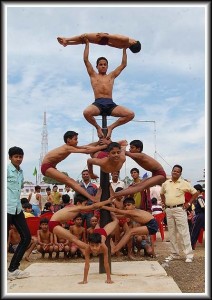 The Indians also have a ‘pole’ tradition of some form dating back to over 800 years and originating in Maharashtra. This form was referred to as “Pole Mallakhamb” and was intended as a way for wrestlers to train. Yes, wrestlers! The literal translation means ‘wrestler of pole’; “Malla” = ‘wrestler’ and ”Khamb” = ‘of pole’.
The Indians also have a ‘pole’ tradition of some form dating back to over 800 years and originating in Maharashtra. This form was referred to as “Pole Mallakhamb” and was intended as a way for wrestlers to train. Yes, wrestlers! The literal translation means ‘wrestler of pole’; “Malla” = ‘wrestler’ and ”Khamb” = ‘of pole’.
The Indians would often play competitively, using a smooth wooden pole with a base diameter of 55 cm and thinner diameter at the top of 35 cm, which was sometimes laced with castor oil to avoid friction. They would wear little clothing, taken from inspirations of yoga clothing or they would wear similar clothing to swimwear and no shoes to allow better skin to pole grip. They became pole flips specialists and would often begin a performance by running up to and flipping directly on the pole. No easy feat by any means, as it requires a great deal of precision and agility.
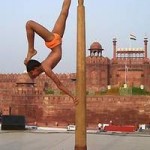 Pole Mallakhamb was used to develop speed, reflexes, concentration and coordination. Training in this form helped to increase stamina, strength and endurance. It was believed that this type of training was beneficial in practicing many other games and sports such as wrestling, judo, athletics, horse-riding, and it improved flexibility, grace, swiftness and rhythm especially for gymnasts.
Pole Mallakhamb was used to develop speed, reflexes, concentration and coordination. Training in this form helped to increase stamina, strength and endurance. It was believed that this type of training was beneficial in practicing many other games and sports such as wrestling, judo, athletics, horse-riding, and it improved flexibility, grace, swiftness and rhythm especially for gymnasts.
Nowadays there are national Mallakhamb championships involving 14 states in India, and is a very male dominated environment in which women do not participate.
How do these forms compare to Pole as we now know it?
THE WESTERN WORLD
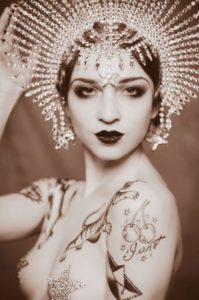 Pole has now evolved into a modern day exercise form. The world of Western Pole dates back a lot longer than you would imagine.
Pole has now evolved into a modern day exercise form. The world of Western Pole dates back a lot longer than you would imagine.
Exotic Dance Influences
Exotic dance, which is now commonly incorporated in modern day pole fitness, can be traced back to ancient times. Striptease has been known to date back to myths of ancient Sumerian times, where the goddess of love, Inanna, was said to have danced and removed one item of clothing or jewelry at each of the seven gates that she passed on her way to find her lover Damouz. There have been linkages of this myth evolving from the Bible’s ‘Dance of Seven Veils’.
Other influences of exotic dance over the years are said to have derived from Parisian times, i.e. Moulin Rouge, the ancient Middle-Eastern art form of belly-dancing, and also from Latin inspired dances such as the Rumba and Tango.
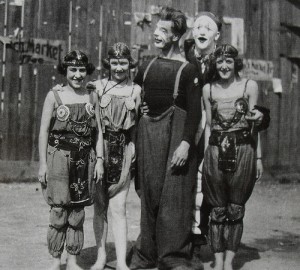 Pole dancing itself has been said to originate from the traveling fairs during the American depression in the 1920’s, where a group of dancers would entertain crowds in tents using a lot of hip movement and suggestive dancing. They became known as the ‘Hoochi Coochi’ dancers and would dance with the pole holding the tent in place.
Pole dancing itself has been said to originate from the traveling fairs during the American depression in the 1920’s, where a group of dancers would entertain crowds in tents using a lot of hip movement and suggestive dancing. They became known as the ‘Hoochi Coochi’ dancers and would dance with the pole holding the tent in place.
One of the earliest recorded pole dances was in Oregon, in 1968, and following this, the pole dance craze is believed to have kicked off in Canada in the 1980’s. A woman named Fawnia Dietrich initiated the first ever class in teaching pole to non-performers in 1994, and has gone on to create the world’s first pole dancing school and produced various instructional videos.
Modern Day Pole Dancing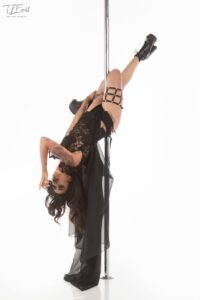
The US, Europe, Australia and Asia quickly followed, with pole dancing and pole fitness classes, studios, academies, competition and training spaces opening worldwide. So today, modern pole is a combination of these centuries old techniques, and has evolved into a modern day form that relies heavily on dance as well as fitness skills.
The fusion of the finely tuned circus performer skills of the Chinese, the energetic acrobatic skills of the Indians and the alluring and sensuous dance skills of the Western world, are what make up Pole dancing as we know it today.
*historical information taken from the International Pole Dancing Association


